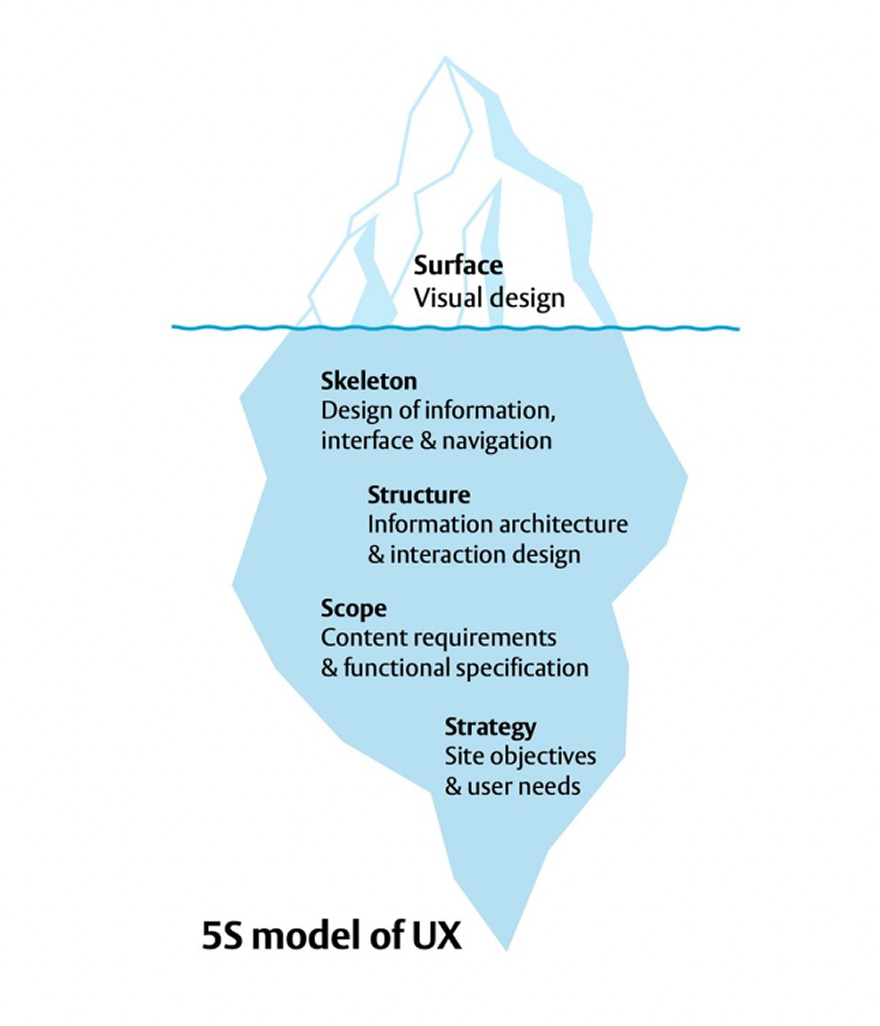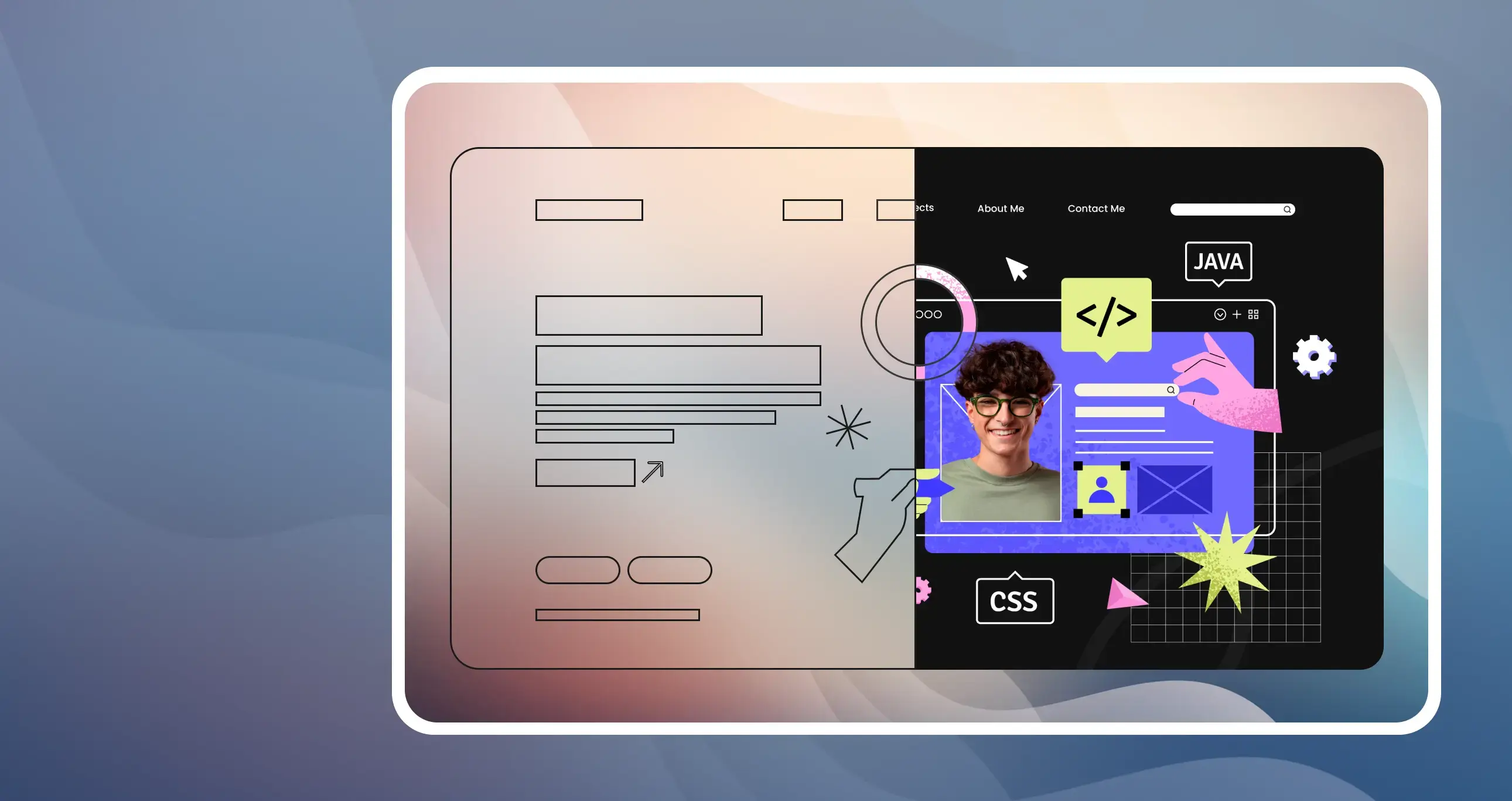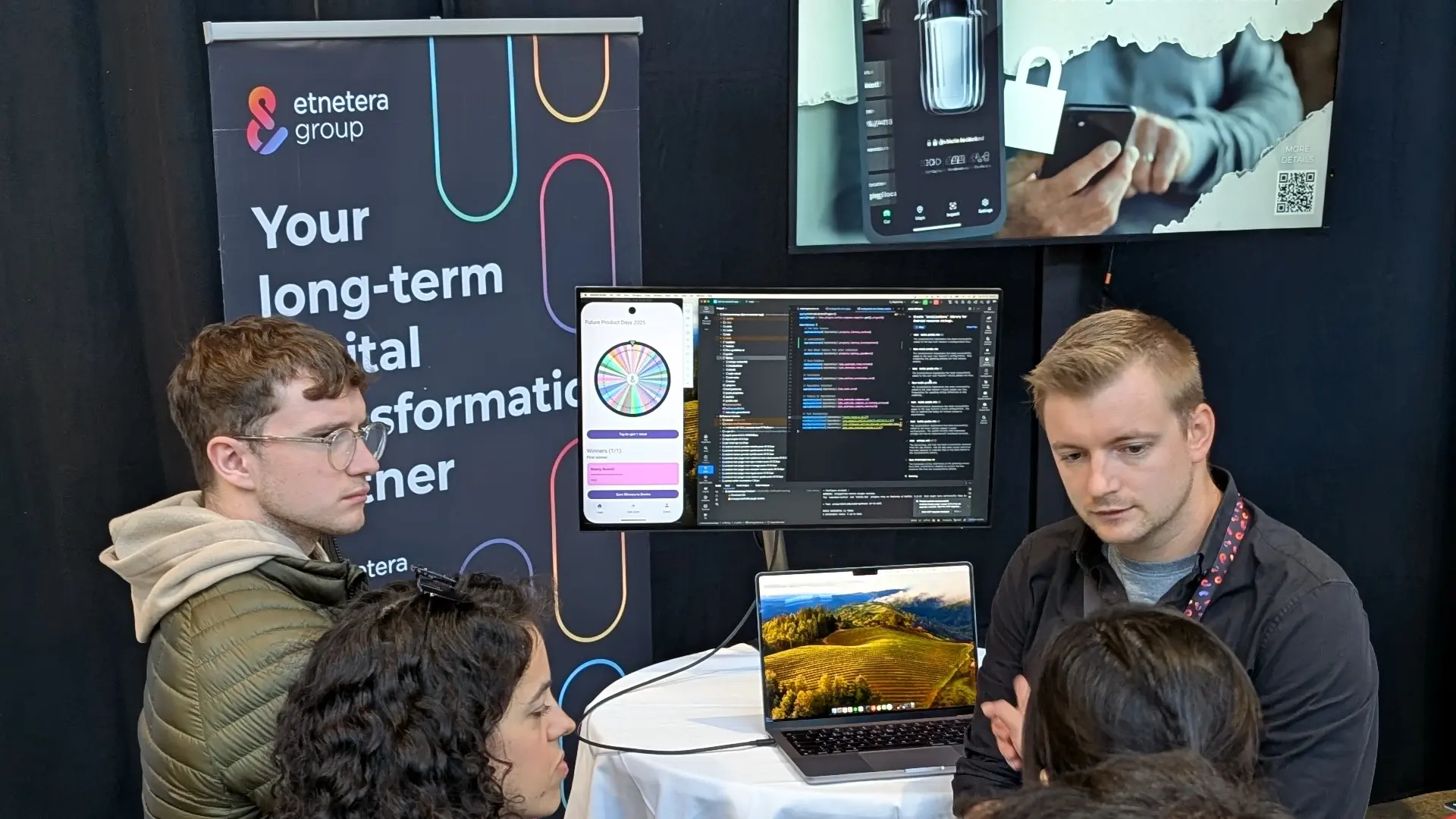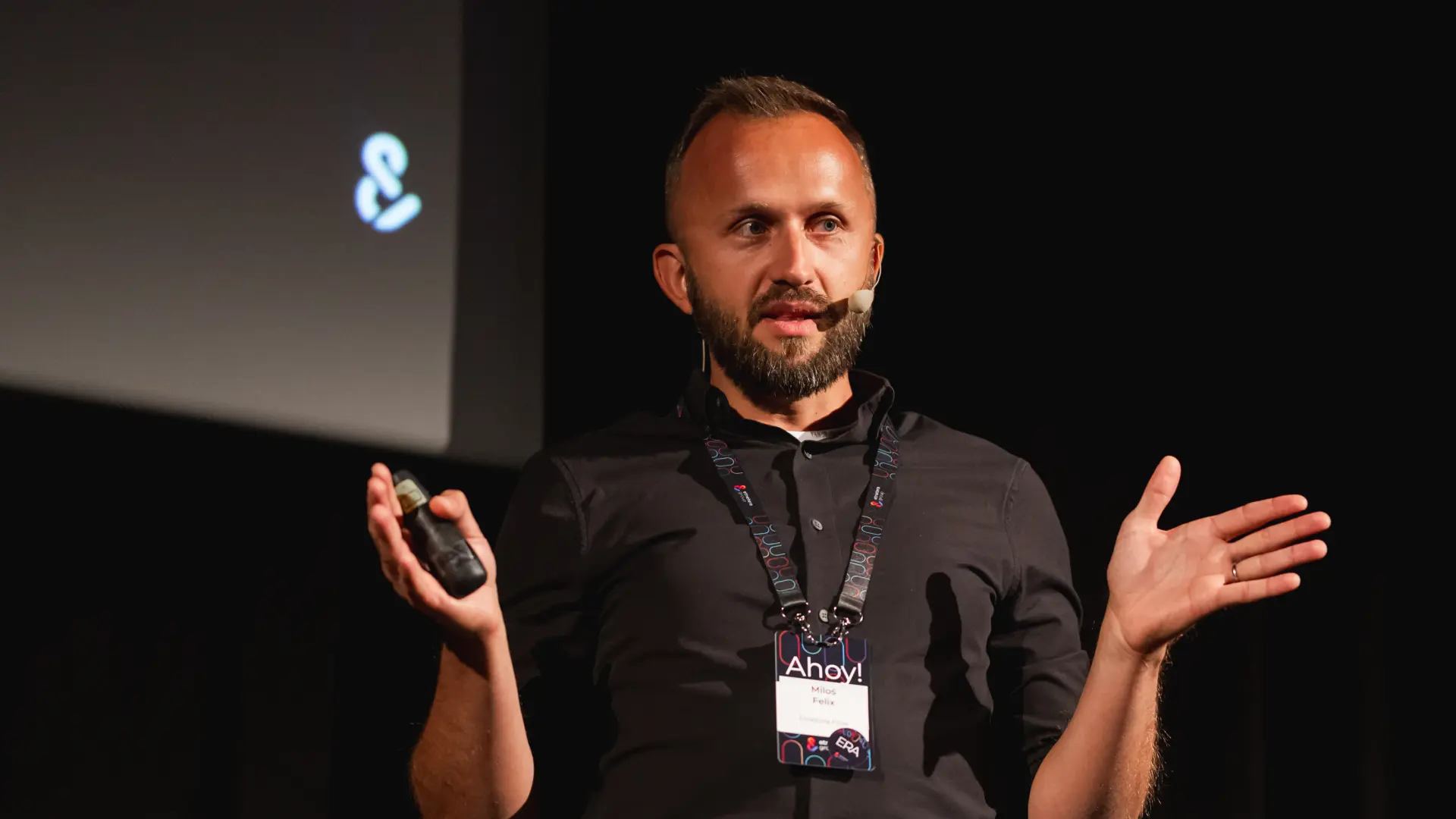What comes to mind when we say good design? For many, it’s visually striking brands, vivid colours, or clever logos. But when it comes to digital products, good design goes far beyond how things look. It’s a strategic tool that connects user behaviour with business outcomes, from higher conversions to faster time-to-market.
Why great design drives better business results
The design of digital products is mainly about how it works for your business and your users. Well-designed products allow users to operate intuitively, support long-term growth and accelerate the entire project in the right direction.
One popular way to visualise how product design works is the iceberg model. What you see above the waterline is the visual layer, which is just a small part. Most of the weight lies beneath the surface:
- Understanding user needs
- Clearly defined business goals
- Information architecture based on users’ psychology
- Natural, intuitive and safe interactions
- Connection with the company’s other digital channels or products

Great design takes more than a good eye. It requires collecting large amounts of data, systematic thinking, understanding your audience’s psychology, deep empathy, and the ability to turn insight into action.
Common patterns (and pitfalls) I keep seeing
Over the years, I’ve noticed a recurring pattern. Companies invest heavily in a plethora of new features and constant UI tweaks based on gut feeling. But they often overlook the fundamentals.
Paradoxically, by saving a little time and money on getting to know their audience better or clearly defining their business goals, they waste much more time and resources in the long run. Why? Because if you roll out features without knowing whether they will have an impact on your business and solve your users’ problems, you have no evidence that they will do any good. And if you do this regularly, your smart product quickly turns into a weed garden, where the good stuff is increasingly diluted by useless clutter.
Companies that treat design as a strategic tool consistently outperform their competitors. According to a popular McKinsey study, design-led organisations grow revenues and shareholder returns nearly twice as fast as their peers.
Let’s look at a few examples of how good design translates into added value of the product.
How good design delivers ROI
When I talk with our clients, the discussion often starts with questions like “Does it look good?” or “Can we make this button pop more?” After some time, we get to the core and start thinking about design as something that creates value, fulfils needs, makes people’s lives easier, and ultimately moves the business forward.
When the design process guides the project, every step is informed by data and analytical thinking. Meetings are turned into facilitated workshops with clear goals and roles. Ideas are translated into hypotheses and explored with your target audience. Business drive is channelled into metrics so they are measurable and not just left hanging in the air.
At the same time, there is plenty of room for creativity. It’s just that good ideas no longer stand or fall on rhetorical skills or the PowerPoint wizardry of their creator, but are compared with the knowledge you have about your audience’s needs and your business aims.
How to achieve your goals with design
The design process is rarely linear. Instead, it’s an evolving journey where steps build on each other, often looping back as new insights emerge. At Etnetera Flow, we focus on a few critical product design stages that don’t happen in isolation – they work together to create a strong, data-based foundation for everything that follows.
Align your visions
Among all the stages, one of the most overlooked, yet essential, is the initial discovery phase. Everything starts with user research, and business workshops.
At Etnetera Flow, we don’t just jump into wireframing; we start by understanding the bigger picture.
“Skipping discovery user research is like shooting blindfolded. You might hit the target, but most probably you won’t, and you will have no control over it.” – Tomáš Haimann, Head of Design at Etnetera Flow
How do we facilitate our workshops?
- Vision and mission workshop: In just two hours, we collaborate to define the product’s purpose and guiding principles. This ensures everyone is aligned on why the product exists and what success looks like.
- Stakeholder interviews: A brief 15-30 minute interview with each key stakeholder allows us to uncover their specific motivations, align perspectives across departments, and ensure a shared goal across the team.
By taking this time upfront, we create a clear framework that ensures the product we build aligns with your goals, and most importantly, addresses real user needs.
Include your audience
While planning the workshops, we start with discovery user research. Many companies don’t do any research, and others just test their design before implementation. And while testing is perfectly fine and recommended, if you have time only for one research phase, it is much more effective to conduct it at the beginning of the project.
Why? Because the user insights you gain will help you create something effective, valuable and engaging right from the start. Testing at the end is great for fixing usability issues, but it won’t tell you whether you are really meeting your customers’ needs in the best possible way.
Most often, we do:
- In-depth interviews: By spending approximately 60 minutes with people who represent each segment of your target audience, we uncover their needs, motivations and problems they face in relation to your product.
Build on a design system
Before you start building your digital product, it’s the right moment to think about scalability. Having a design system means your design isn’t a mess that only designers can manage. New features can be added faster and more consistently. Development is significantly quicker, with fewer UI bugs. The user experience is better because the whole product works the same way throughout, and handovers between teams couldn’t be smoother. And it doesn’t have to be overly complex; you can scale a design system from a fast, simple, customised UI library to robust multichannel solutions for global products.
- Design system: Even a basic component library can make a huge difference compared to starting from scratch every time. Think of it as a living, evolving asset that grows along with your product. Start small if you need to, and build as you go.
A design system reduces time-to-market, lowers development costs, and creates a more cohesive user experience as your product expands. That's why virtually all major digital brands across industries rely on it.
Good Design Means Good Business
Good design is not just a “nice to have.” It’s a business approach that reduces costs, increases revenue, improves retention, accelerates delivery, and helps teams make smarter, faster decisions.
Most importantly, good design ensures you build something people want to use.
So, if you’re aiming to create a product that scales, converts, and retains, it’s simple: invest in good design early. It pays off for your users and your business goals.
Ready to take your design to the next level? Let’s discuss your project and how we can bring your vision to life.







.webp)

.webp)




.jpg)
.jpg)
.png)
.avif)

.avif)



























